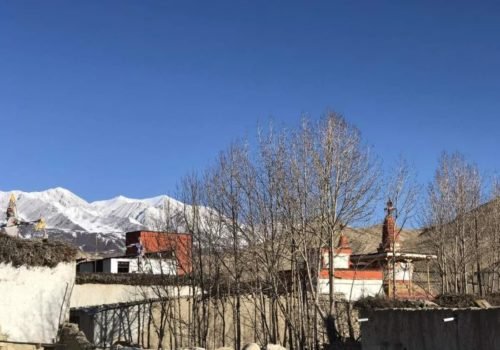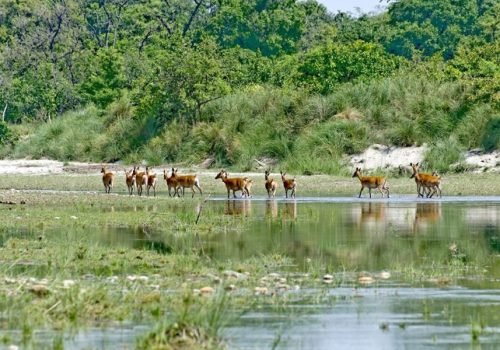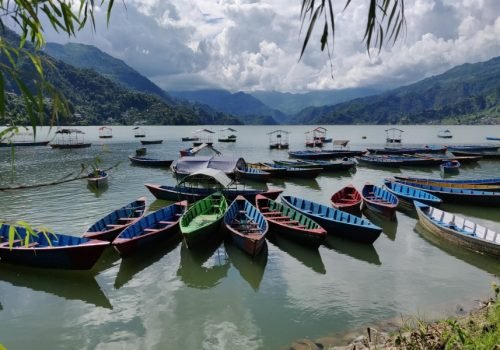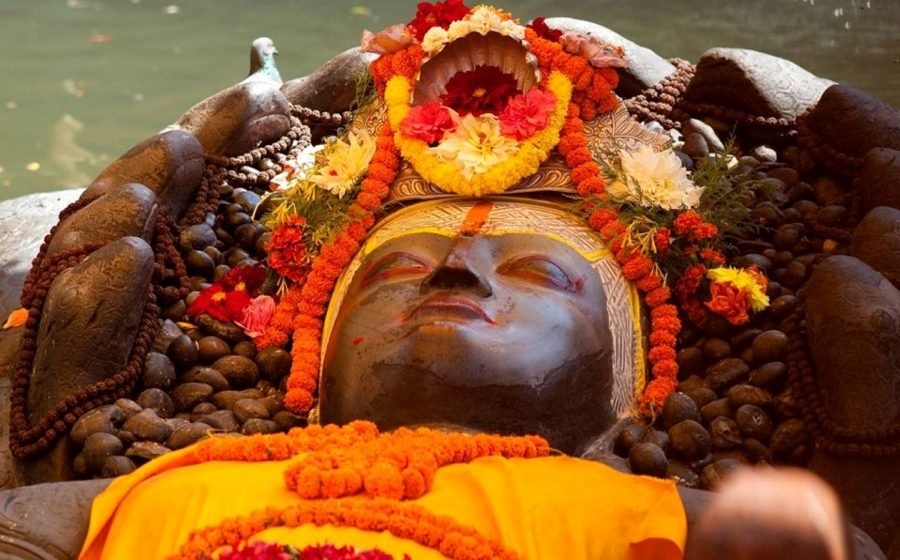
Hindu Temples in Nepal that you must visit
Posted in 21st Jun, 2020
Nepal is one of the only kingdoms in the world where the majority of the people inhabitants have adopted the Hindu religion and worship many gods and goodness. Based on the god and goodness, Nepal has many popular temples and shrines throughout the country where one can go and pay homage to the different gods worshiped in the Hindu religion.
Pashupatinath Temple

Pashupatinath Temple is a religious destination for Hindu religious people from all over the world. The largest and holiest temple is a combination of religion, art, and culture. It offers peace and devotion. Pashupatinath Temple is situated on the bank of the Holi Bagmati River. The temple was built in the 5th century and designated a UNESCO World Cultural Heritage Site in 1979. The temple premises has around 492 temples, 15 Shivalayas (shrines of Lord Shiva), and 12 Jyotirlinga (phallic shrines) to worship. This temple is an important destination for art historians. It displays a variety of temple designs some of which are Dome style, Pagoda style, Shikhara style, and so on. Additionally, there are varieties of statues and sculptures around the complex. There are statues made of stone, metal, and wood. The door and pillars around the temple area are carved in beautiful shapes of God and griffins.
No entrance fee is charged for SAARC nationals to enter the temple. Although only Hindus are allowed to enter the temple, visitors can clearly see the temple and the activities performed on the temple premises from the eastern bank of the Bagmati River.
Guhyeshwari Temple ( Saktipeeth)
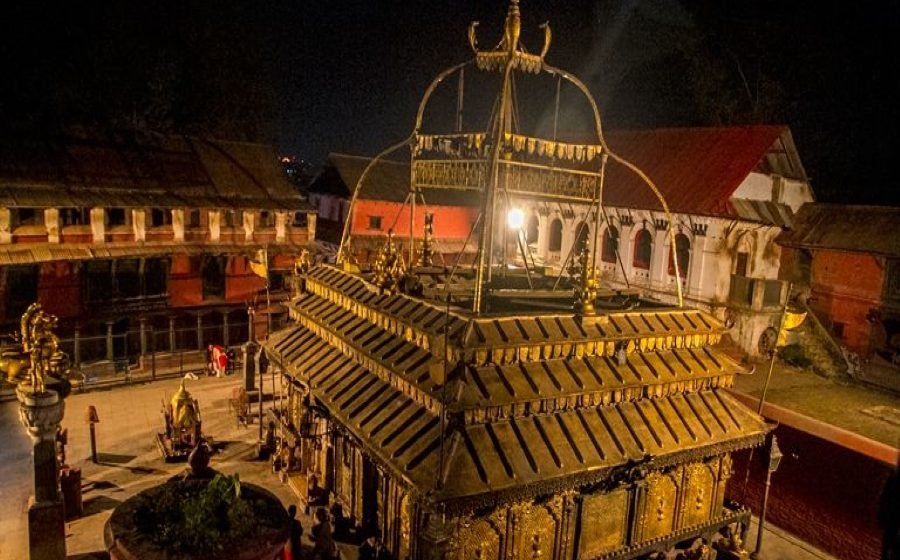
Guhyeshwari Temple is an important pilgrimage destination for the Hindus as well as the Buddhists. Located around one kilometer east of the main Pashupatinath Temple, it is one of the most important temples within the Pashupatinath area. Recognized as a Shakti (power) Peetha, it is considered a symbol of power. It is believed that a body part of Sati Devi (wife of Lord Shiva) fell after her death at the exact spot where the temple is now located. This temple was built by King Pratap Malla in the 17th century.
Doleshowor Mahadev Temple
Pashupatinath and Guhyeshwari are beautiful representations of Shiva and Shakti unity. Located at the banks of River Bagmati, the temple portrays the female side of the divine. Guhyeshwari is also known for its Tantrik rituals (esoteric tradition of Hinduism). It is believed that people who want to gain strength visit this temple to worship Mother Goddess.
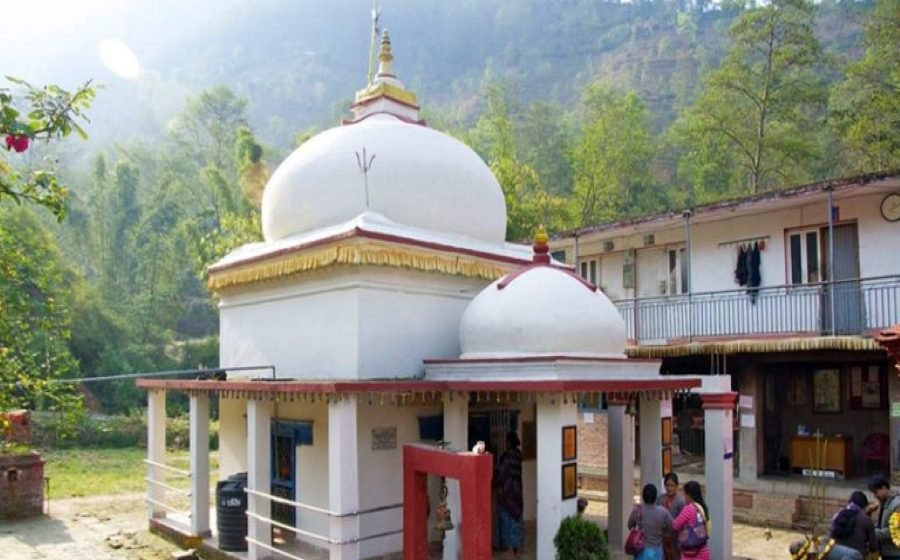
Doleshwar Mahadev Temple is situated in Bhaktapur just 20 km east of the capital city of Kathmandu. It is about a 30-minute drive from Kathmandu. For all the Shiva devotees, it is believed that the trip to Kedarnath is incomplete without visiting Doleshwar Mahadev and Pashupatinath Temple. A visit to all these three holy places is believed to wash off all the sins of one’s lifetime and an opportunity of receiving holy blessings from Lord Shiva. In the year 2013, after the devastating flood hit the temple of Kedarnath, situated in Uttarakhand, the regular prayers that were interrupted were carried out in Doleshwar Temple. The head priest of the Kedarnath Temple requested regular prayers that used to be held in the Kedarnath Temple be held in the Doleshwar Mahadev Temple.
Changunaryan Temple
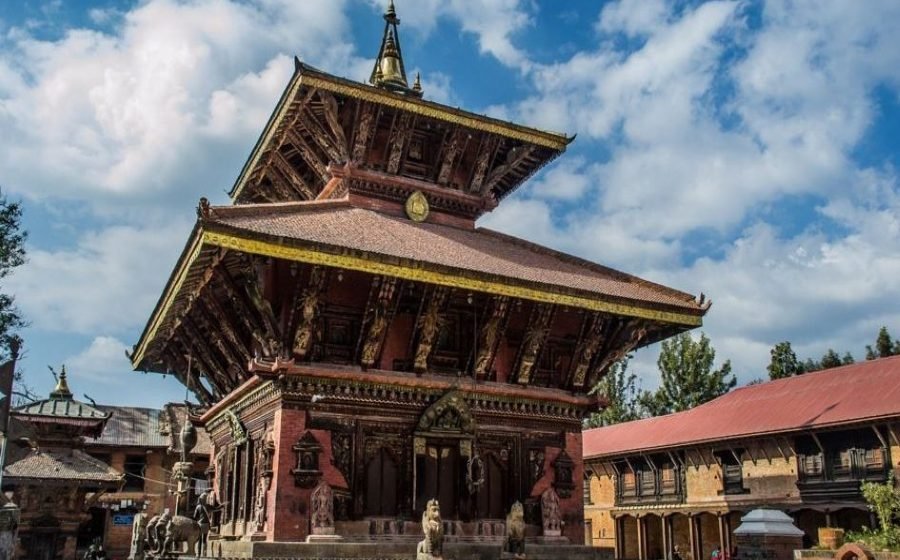
The oldest temple of Nepal has been started around 1700 years of history, named “Changu Narayan”. Approximately 22 km away from Kathmandu Valley, Changu Narayan temple is perched on a high hilltop of a small village, known as Changu Village. Besides the hill, the flowing Manahara River gives a pleasing view. Past, it was built in the 4th century during the Lichhavi Dynasty and remodeled in 1702 after a major fire occurred.
Budhanilkantha ( Jal Narayan Temple)
The Temple was built neither in shikhara style nor in pagoda but consists of a double-roofed, dedicated to Lord Vishnu in his incarnation as Narayan and held in special admiration by the Hindu people. Nepali architecture remains a major landmark with regally embossed works. The main statue in the sanctum is devoted to Hindus as a Garuda Narayan. Only the priest is permitted to see the statue. The statue of Lord Vishnu seated on a Garuda is located to the north of the temple which has been sculptured back in the 9th century. On the way to the temple, a private museum is located, “ChanguMuseum”, which has a collection of ancient tools, coins, architecture, and art.
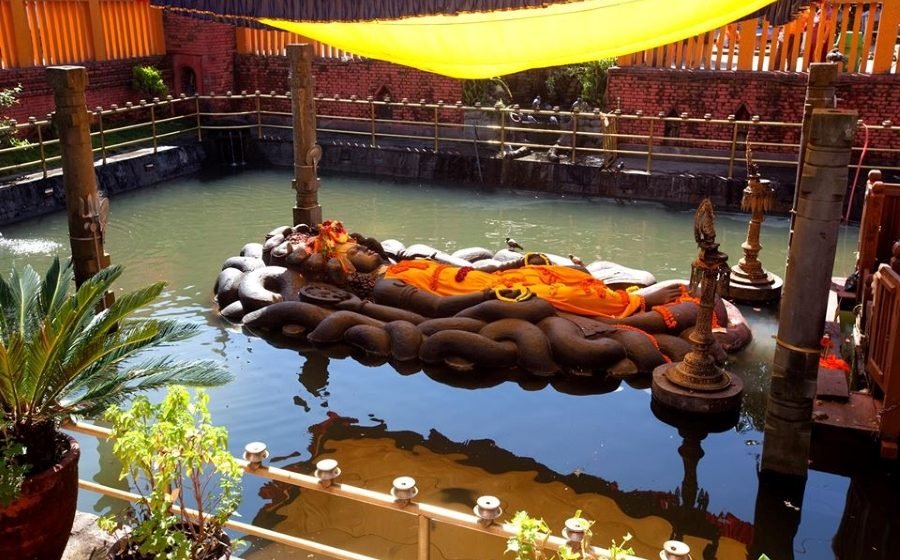
The Budhanilkantha Temple is a famous Hindu Temple in Nepal in Kathmandu devoted to Lord Vishnu It is Located just 10 KM away from the city center at the foot of the Shivapuri hills in the northern-most part of Kathmandu Valley. The largest and most beautiful single stone carving statue of Lord Vishnu in Nepal, shows him reclining on a bed of Nagas or serpents in the middle of a small pond. A priest is usually in attendance at the foot of the image to receive offerings from devotees. The 5m long granite image carved out of a single rock dates back to the Lichhavi period. The statue is also known as the Sleeping Vishnu or Jala Narayan Temple
Visit the holy Budhanilkantha Temple and offer prayers at one of the most revered Vishnu shrines in the valley. The remarkably intricate artwork that went into sculpting this magnificent 5th-century stone image of the sleeping Vishnu is worth a close look.
Manakamana Devi Temple

Manakamana Devi Temple is a very popular Hindu Temple in Nepal of Goddess Durga Bhawani situated in the Gorkha district of Nepal. The name Manakamana is made from two words “mana” explaining the heart and “kamana” expecting a wish. It is believed that people who pay homage to Manakamana Temple never leave empty-handed as their wishes will be fulfilled if devotees pray with good and pure intentions. The Manakamna Temple is situated on the top of a beautiful hill from where you can also see the natural beauty of Nepal’s Himalayas and see mountains like Manaslu, Annapurna, and Trishuli and Marshyangdi rivers. There is a Manakamana Cable-Car service which takes only ten minutes to ride to the temple of Goddess Manakamana Devi.
Muktinath Temple ( Muktidham)

Muktinath Temple is one of the ancient temples of the god Vishnu which is a highly venerated spiritual place among both Hindus and Buddhists. It is situated at an altitude of 3710 Meters in Jomsom Valley, Mustang Nepal. Hindus believe that this place is ‘Mukti Kshetra’, as a symbol of liberation. The Kaligandaki River downstream from Muktinath is the only source of the “Saligrams” which have religious and spiritual significance. Muktinath is one of the 8 sacred shrines for Hindus all over the world. Apart from carrying its own religious importance, this place also offers a mesmerizing view of the Himalayas and the Tibetan environment around. Though Mustang is also considered the desert of Nepal, the breathtaking view of the Himalayas will leave you speechless and make your visit once in a lifetime.
The Muktinath temple has connected by road and air. Nowadays you can easily fulfill your dream to have darshan in a short time with a comfortable journey. Several airlines company has scheduled flights to Jomsom from Pokhara which is the main gateway to Muktinath Temple, You can also charter a helicopter to reach Muktinath Temple from Kathmandu and Pokhara. Those who want to have an adventure road trip to the temple can drive from Pokhara.
Bindabasini Temple

Bindabasini Temple is a very popular Hindu temple in Nepal and one of the most visited temples located in the beautiful city of Pokhara. It is standing on a small hilltop and 3000 feet from sea level. This religious place of Hindus living in the Pokhara region is dedicated to the goddess Durga. The ornate structure of the Bindabasini Temple is surrounded by a park-like landscape. Many come here to enjoy pleasant picnics whilst enjoying the amazing panorama. Spectacular views can be absorbed from this marvelous vantage point which looks out over the town of Pokhara and takes in some of the impressive Himalayas. Adding to the peaceful atmosphere is the fresh scent of “Dhup”.
A visit to Bindabasini Temple can be combined with a stroll through the Old Bazaar. Nearby is also the popular holiday leisure spot of Phewa Lake. Located at the foot of the hill on which Bindabasini Temple stands is the roadway to Sarangkot, another popular lookout point.
Janakpurdham ( Ram-Janaki Temple)
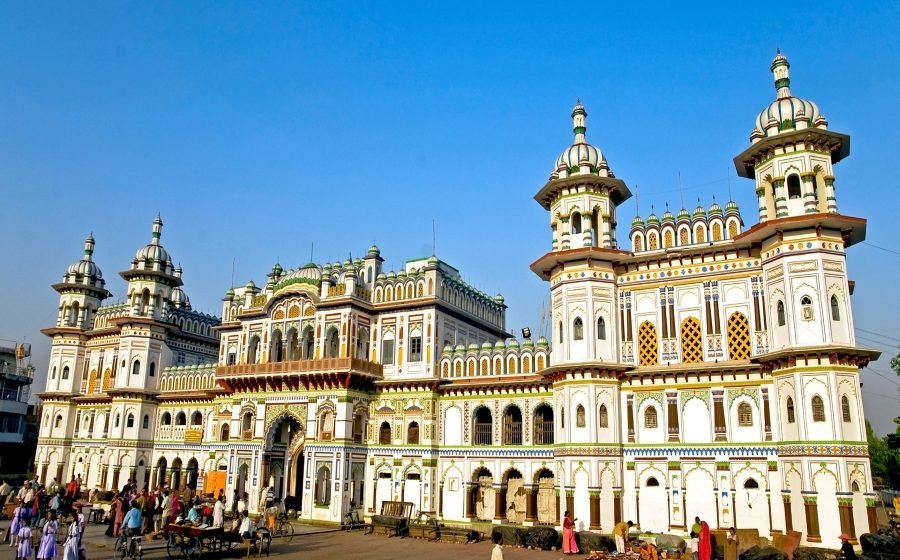
Janakpur also called Janakpurdham is known for its secure place for Hindus. It is also the capital of the Mithila Kingdom. The city of Janakpur is located southeast of Kathmandu and is home to many temples and religious ponds. Located here is the Janaki Tempe which is a dedication to the goddess of Sita and stands as Janakpur’s oldest temple, and Nepal’s biggest. The intricate building features incredible details and is an important example of Rajput architecture. In addition to this, the city is home to more than 100 sacred ponds, such as Ganga Sagar, and traditional artworks from the Maithili women, the origins of which are mysterious and as ancient as the place itself.
Janakpur has been mentioned in the Ramayana as the birthplace of Sita, Ram’s consort. As Ram is believed to be the incarnation of Lord Vishnu, Sita is believed to be the incarnation of Goddess Lakshmi. It is said that Ram and Sita met in Janakpur and eventually also got married here. Janakpur is also one of the holy sites on the route of Parikrama (holy circle) which is carried out by devout Hindus as a form of worship along with Ayodhya, Kashi, and Brij in India. Another important religious site nearby is Dhanushadham, dating back to the Ramayan era. It is believed to be the place where the broken remains of Lord Shiva’s bow fell after Ram broke it to win Sita’s hand in marriage.


